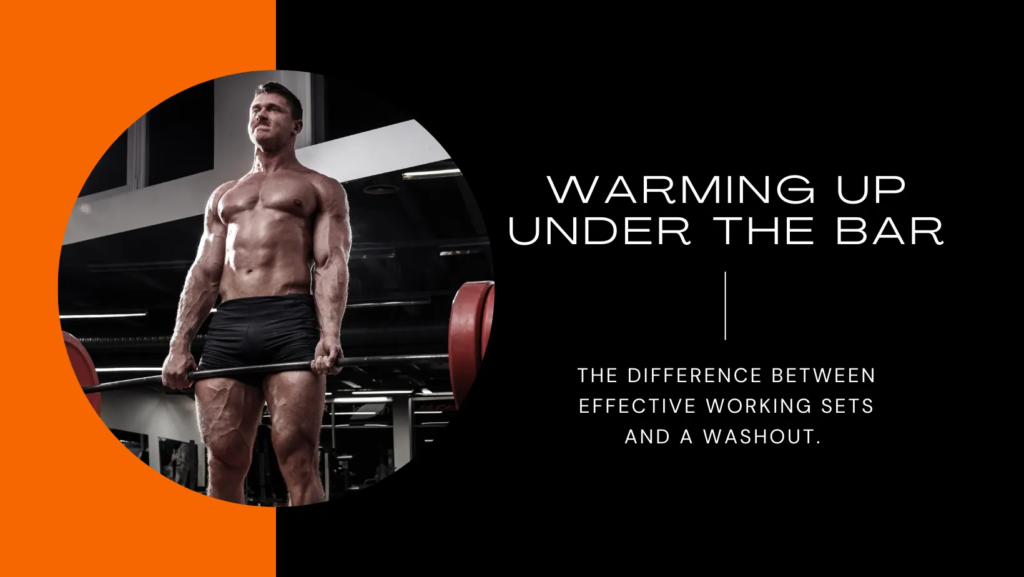In this blog, I want to dive in and explore the importance of how you execute your specific warm-up reps under the bar, those reps you do as you build up to your working sets. I will reflect on the most common approaches and then why you should attack them with the same intent as your working sets.
I genuinely feel many people leave a lot of gains on the table due to poorly executed warm-ups under the bar.
Once you have completed a general warm-up by raising your body temperature to warm up and mobilise the muscles, joints and supporting tissues around the areas you plan to use, I have covered this briefly in a previous blog. It is usual practice to move on to your main compound exercise of that day and do a few warm-up sets as you gradually increase the bar weight to the weight of your working set.
Now I’ll explain what most commonly happens.
Lifters, eager to get-going, jump under the bar and fly through the warm-up reps to reach the working set weight as quickly as possible.
At this point, the first 2 sets of the working sets are all over the place. The bar sways everywhere, while the lifter gets pushed forward into their toes, knees will be wobbling in and out, or elbows are flaring out and wobbling all over the place.
Finally, by the last set, the lifter may have sorted it out and got the bar tight while maintaining tension through each full rep, but at the cost of all the previous junk reps, which did very little for the development of strength, muscle size, or the lifter’s back. In turn, the lifts themselves never really improve, and numbers stay the same.
How could this have been avoided?
By spending a little longer on the early warm-up reps and combining some movement-specific activation drills based on your findings.
You must use those early reps as a diagnostic tool to check in with your body. These reps will then tell you if you need to do any specific activation work for your core, glutes, or shoulders before you begin loading the bar up.
What are you assessing for exactly?
Firstly, you want to feel the bar path and look for any tight muscles or stiffness around the joints that may create a sub-optimal bar path from A to B. Do you need more mobility work, or do you need to spend a minute or activate a muscle group?
Secondly, but equally as important, you should see your warm-up sets as a replication of your working sets. That means the set-up and execution should look the same, even identical. Doing this will ensure you can recruit as much strength as possible each time. Any unnecessary shift in the bar path changes how your central nervous system responds, affecting maximal output.
Instead of thinking, “It’s only 30kgs,” and flying through it, prepare and set up like it is your top set.
The cherry on the cake will be that you will be at peak performance by the time you reach your working sets, leading to maximal muscle recruitment and an increase in bar weight!
In Conclusion
The execution of warm-up reps is a critical yet often overlooked component of effective training. This blog has highlighted the transformative power of approaching warm-up sets with the same intensity and focus as working sets. By doing so, you not only enhance your performance and safety during the workout but also set a strong foundation for consistent progress and gains. Warm-up reps are not just a preliminary routine; they are an opportunity to fine-tune your technique, engage your muscles properly, and ensure peak performance in your working sets. Remember, every rep is a step towards your goals; approach them with the respect and attention they deserve for optimal results in your fitness journey.

